Ball Reviews
Review: 2015 Titleist Pro V1 and Pro V1x
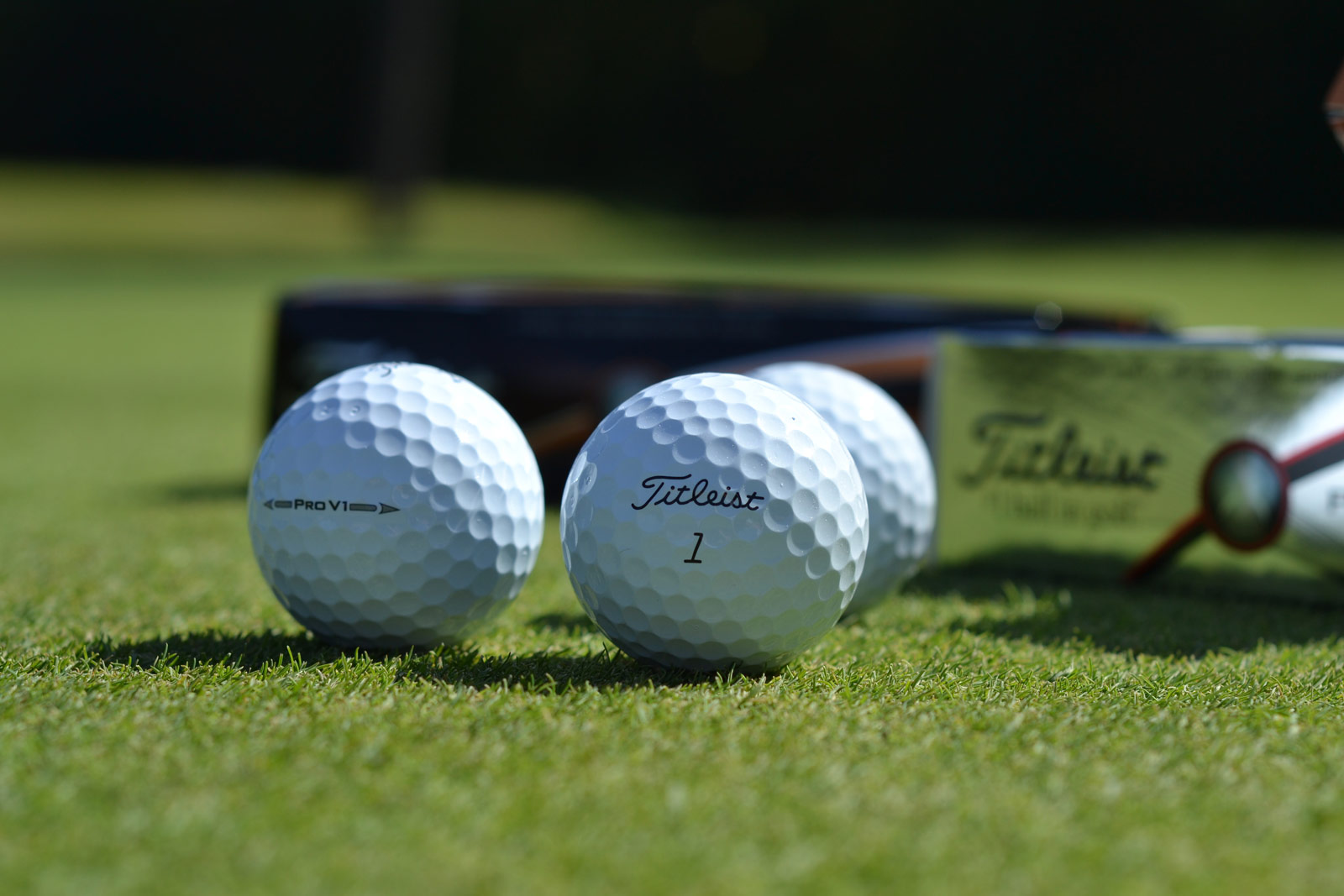
Pros: Golf’s golden standard for distance, consistency and short-game spin. Both the Pro V1 and Pro V1x are softer than previous generations, offering more check around the greens and better durability.
Cons: At $47.99 per dozen, the 2015 Pro V1 and Pro V1X are two of the most expensive golf balls on the market.
Who they’re for: Golfers who want the best blend of distance, trajectory control, short-game spin and feel. The Pro V1 and Pro V1X are Titleist’s best-performing golf balls, regardless of a golfer’s swing speed.
Overview
There is no denying the quality and performance of the Titleist Pro V1 and Pro V1x throughout the years. Sure, there are other golf balls on the market that perform extremely well, sometimes at lower price points, but the Pro V1 line is an icon in golf. Instantly recognizable and known for its consistent performance, each new release builds on the previous.
Titleist hasn’t made any radical changes to the performance of the balls from one release to the next, but they are always improving the Pro V1 and Pro V1x in some way. When they asked tour pros, as well as thousands of amateur testers, what they wanted in the new balls, all they asked for was a bit more spin and softer feel.
And Titleist delivered.
Both golf balls feature a new, thermoset urethane elastomer cover designed to feel softer, increase short-game spin, and at the same time, be even more durable than models of the past.
I don’t want to spend too much time on the technical side of the cover, but I was intrigued to learn it has only ever been designed for use on a golf ball. Most tour balls have a different type of urethane cover, which typically is developed by an outside vendor and not made specifically for a golf ball. Titleist engineers have complete control over the material, and that gives them the ability to make subtle tweaks until they have the exact performance characteristics they are looking for. Hundreds of formulations went into the final 2015 Pro V1 and Pro V1x until they found the perfect mix.
Related: Go behind the scenes at the Titleist golf ball factory
Pro V1
The three-piece Pro V1, just like previous generations, has a softer feel and slightly more long game spin than the Pro V1x. The single ZG process core helps generate low spin off the driver, a more penetrating trajectory and flatter landing angle, which can generate more roll than the Pro V1x.
The brand new cover not only feels softer, but is noticeably more durable than previous generations. Titleist tour pros have already claimed they can play the same ball for an entire round, even with their fresh grooves and higher swing speeds.
Pro V1x
The four-piece, dual-core Pro V1x has a slightly firmer feel, generates even less spin off the driver, and launches higher than the Pro V1. Just like previous generations, the outer core and inner mantle work to deliver the specific trajectories golfers want from fairway woods, hybrids, irons and wedges. The same improved Thermoset Urethane Elastomer cover found in the Pro V1 also is found on the Pro V1x.
The Pro V1 and Pro V1x carry a minimum advertised price of $47.99. Both are available in standard and custom play numbers. Standard numbers come in low (1-4) and high (5-8). Double-digit play numbers, 00 and 11-99, are available for custom order with a minimum order of one dozen.
Performance
If I had a whole closet full of either golf ball, I’d be really happy. Both the Pro V1 and Pro V1x are just that good. But there are subtle differences.
- The Pro V1 should feel softer on every club and generate more spin off the driver.
- The Pro V1x should spin less off the driver, but more with shorter irons.
Like all reviews, I put these to the test on the range and on a launch monitor with a 60-degree wedge, 6 iron and a driver. This time around, I headed to BridgeMill Golf Academy and worked with head pro Tom Losinger to get the data using a Trackman in his indoor studio.
60-degree full wedge shots
Main differences we expect to see: The Pro V1X should generate more spin on full wedge shots than the Pro V1.
What the data actually shows: Exactly what we expected. The spin rate for both golf balls is right around 9,000 rpm, with the Pro V1x generating almost 200 rpm more spin. The difference isn’t huge and you can control spin with both balls, but the edge goes to the Pro V1x.
The flight of both balls was similar, however, and the real difference was in carry and total distance. The Pro V1x actually flew 4 yards farther on average than the Pro V1 for me.
What I saw on the course: Both balls had tremendous drop, stop and back-up power on full and even partial wedge shots. Maybe the pros can tell the difference in a couple hundred rpm of spin, but me and most golfers probably need a launch monitor to be certain. I also did not notice much, if any, difference in distance between the balls, and the ball flight was very similar. I did like the feel of the Pro V1 over the Pro V1x, but now we’re just splitting hairs.
6 iron shots
Main differences we expect to see: As we get down to the mid and longer irons, the Pro V1 should start to spin more than the Pro V1x and also launch a little lower.
What the data actually shows: Every data point was higher with the Pro V1 except carry and total distance, which was only a yard longer with the Pro V1x. I generated quite a bit more spin with the Pro V1, which I expected. But I also had a higher launch and peak height with the Pro V1, which I didn’t expect. Based on that data, I would put the Pro V1 into play and maximize those conditions to help me get the ball up quicker and come down steeper into the greens with mid or long irons. The trajectory wasn’t ballooning; it was just a nice, solid ball flight.
What I saw on the course: The Pro V1 continued to make my job easier with the mid irons. Maybe I just happened to pure every shot when the Pro V1 was in play (not likely) or maybe the launch and peak height numbers truly translated to the course. Even with the more effortless launch, my distance was spot on. I don’t want to take anything away from the Pro V1x, because I love the way it performed. Fitting and testing is important for every golfer, and no further proof is necessary for me than the fact that I played my best mid iron approach shots with the Pro V1.
Driver Shots
Main differences we expect to see: The differences are more clear with the driver. The Pro V1x should launch higher with less spin and more distance than the Pro V1.
What the data actually shows: Well, my data didn’t completely align with the expectations, but it was close. The Pro V1x was longer in carry and total distance by 2 yards and it generated less spin off the driver. It wasn’t a huge difference, but it was lower. That said, the launch angle was very similar and the balls hit the same peak height and had a similar descent angle. The slightly lower spin and higher ball speed is what gave the Pro V1x the edge in distance.
What I saw on the course: Both balls were champions off the tee. I didn’t notice much, if any, distance loss between the Pro V1 and the Pro V1x. If the Pro V1x was longer, it was only by a yard or two. Neither golf ball ballooned up into the wind, and both had the same amount of control side-to-side.
Around the Green
I could list off all the shots you can hit around the green, but I would start to sound like a broken record. Both balls can perform them all, and can certainly handle more shots than I have in my arsenal. The Pro V1, with its softer feel, gave me the illusion of a more sticky feel, but the differences are truly subtle.
So much of what we feel is determined by the sound we hear. It is why club makers spend so much time fine-tuning the sound profile of their clubs. It seems that Titleist consciously tweaked how both balls sound off the club face, which I believe positively contributes to both golf balls feeling noticeably softer than previous generations.
Putting
When it comes to putting, I would choose the Pro V1 every day. It is one of the best, if not the best-feeling golf ball off the putter that I have tested and put in play. It was softer off the face than the Pro V1x, but that is not to say the Pro V1x isn’t soft. In a blind test, where I marked over the product name, I was able to pick out the Pro V1 fairly accurately. I say “fairly” because I wasn’t perfect, which goes to show how good they both feel.
Interestingly, the new, softer cover on the Pro V1x actually made it feel about as soft as the previous generation Pro V1. I’ll give the edge to the Pro V1 here.
Durability
I completed all my testing with just three of each model. The improved cover appears to be working as expected. I could wash these balls off and put them back in play. Even with fresh grooves on my wedges and numerous wedge swings off a tight, clean, indoor hitting mat, these golf balls were highly durable. Yes, there were minor scratches, but nothing that would impact playability and I didn’t notice any difference in durability from one ball to the other.
Given the price, I’m happy to see that if I can keep the ball out of the woods or water, I can go an entire round or more with the same ball.
The Takeaway
I tested the previous generation balls last year, and while the testing was done on a different launch monitor and with different clubs, the comparisons were shockingly similar. Titleist engineers set out to keep everything the same, except figure out how to make each ball softer, more durable and spin a little more. They succeded.
On course, the Pro V1 had a better feel and I shot better scores with it. The data, especially the slightly lower spin off the driver and higher spin off the wedges, suggests I should play Pro V1x. But with the margin between the balls razor thin, I’m going with feel and confidence this time, which means the Pro V1 is going in the bag.
I encourage all golfers to put these balls to the same test, and see what’s best for them. It’s hard to go wrong with either of them, whether you’re comparing them to the rest of Titleist’s line or any other golf ball on the market.
[wrx_retail_links productid=”13″]
Related
- GolfWRX member testing of Titleist’s new Pro V1 and Pro V1x golf balls
- Review: Titleist’s 2013 Pro V1 and Pro V1x
- Titleist DT TruSoft: What you need to know
- LIKE158
- LEGIT12
- WOW2
- LOL3
- IDHT0
- FLOP1
- OB3
- SHANK14
Ball Reviews
Is the Future of Golf Balls Lower Spin?
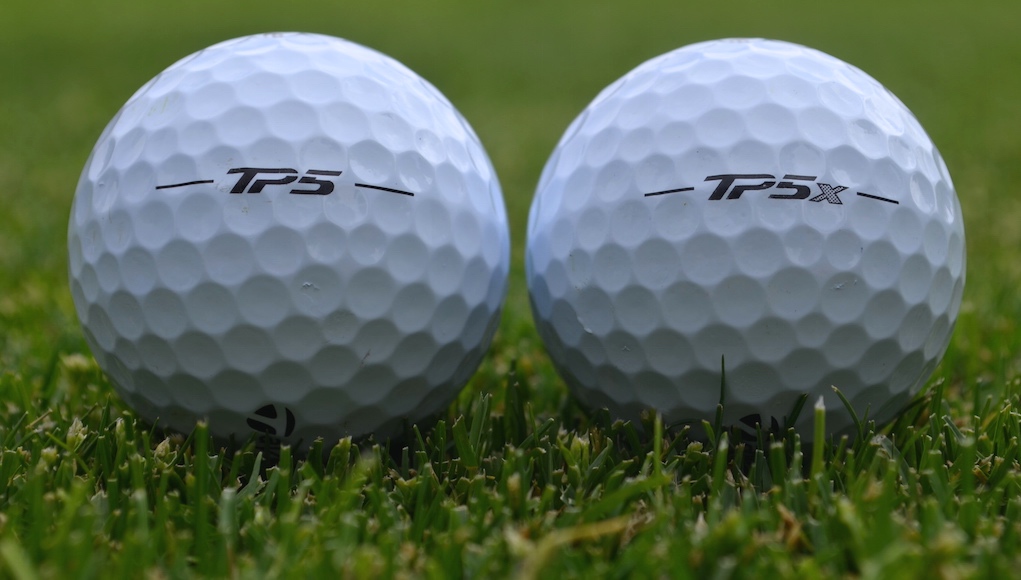
For years now, TaylorMade has been preaching lower spin to create more distance, especially in its drivers. Its original SLDR driver was actually so low spinning that TaylorMade encouraged golfers to try higher-lofted club heads, or to “loft up,” so golf balls wouldn’t dive out of the air. Now, when you look around at the popular drivers in the industry, most of them are designed to lower spin. TaylorMade was ahead of the curve.
With its new TP5 and TP5x golf balls, TaylorMade is pushing a similar initiative: lower spin on all full shots.
“This ball is different. You can make the argument this is too hot a golf ball for people who don’t spin it (enough). But that’s not the large percentage of golfers.”
For driver shots, it’s easy to understand the benefit of lower spin as long as the golfer launches it high enough. Low spin plus high launch equals more distance; that’s just a math equation. But with golf balls, as opposed to drivers, their jobs are also to get close to the hole, not just go as far and straight possible. With that in mind, is lower spin necessarily beneficial on ALL full shots, including the irons?
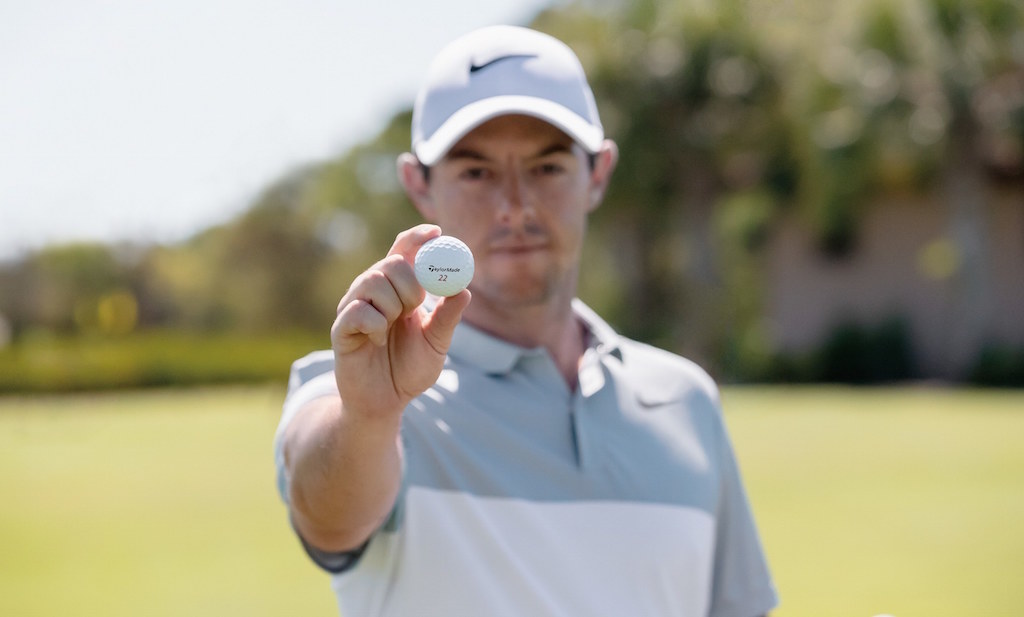
For Jon Rahm and Rory McIlroy, who both switched to TaylorMade TP5x golf ball this season — the lower-spinning and slightly firmer-feeling golf ball in the TP5 line — the answer is clearly “yes.” Rahm saw an 800 rpm drop in iron spin with a 4-iron compared to his Titleist’s Pro V1x golf ball and a 400 rpm drop in driver spin, according to TaylorMade. McIlroy saw up to 10 yards in extra distance with a 5-iron, and he picked up distance with the driver, as well. According to Eric Loper, Director of Golf Ball R&D at TaylorMade, McIlroy was hitting his 7 iron at 16.1 degrees of launch with 6350 rpm, and his 4 iron at 11.1 degrees of launch with 3800 rpm during his initial Trackman testing at The Bear’s Club.
“(With a 7 iron) you have to hit it about 7000 (rpm) or less, and he was hitting (his previous ball) up to 7500 (rpm),” Loper said. “That’s too high… (With the TaylorMade TP5x) he didn’t express any concern with (spin being too low). It was launching high, getting to its apex and landing soft.”
Hoyt McGarity, President of True Spec Golf, an internationally renowned custom club fitter with more than a dozen locations, has seen similar performance gains with TaylorMade’s TP5x golf ball through his personal testing and his testing with Tour players. He said he’s seeing 2-3 mph more ball speed compared to other golf balls. Just as importantly, he’s seeing those gains with a higher ball flight in what he called “straight up” club tests.
“Some of the Tour players — straight up, same loft, same lie, same golf club, same everything — they would launch this golf ball almost a degree higher, which is amazing,” McGarity said. “I was seeing almost 2-3 mph more ball speed for these Tour players, not that they need more distance, but I’m like, ‘You’re launching higher and it’s going further and it’s still coming in soft; it’s not coming in low and hot. It’s coming in high and still soft, so what’s the disadvantage?’ If you’re a low-ball hitter with low spin, you might have some issues. Your half shots might be tough to control the distance on it, that’s all.”
So while TaylorMade’s TP5 and TP5x golf balls are designed to go farther and with less spin on full shots, the company says their steeper landing angles will help them stop nearly as fast as higher-spinning balls. TaylorMade’s belief is based on the company’s scientific bounce-and-roll calculations, which factor in green conditions and landing characteristics. Yes, the lower spin of its golf balls in relation to competitors leads to minimally more roll out, but the amount is insignificant according to TaylorMade: an additional 1-1.5 feet. The company also points out that with a longer-flying golf ball, golfers will be hitting shorter clubs into greens, leading to more control. An 8 iron will yield greater stopping power and accuracy than a 7 iron, right?
Expert fitter Scott Felix of Felix Clubworks agrees with TaylorMade in theory. He said that as long as the golf ball is coming into a green at a steep enough angle, low spin is not a problem for approach shots.
“Most golfers spin the ball too much with their irons, costing them distance,” Felix said, “…but for golfers who already have a flat trajectory (with their irons), lowering spin won’t help them hold the green.”
McGarity added that about 80 percent of golfers who come to him for a fitting spin the ball too much, and for Tour players, the drop in spin won’t have a detrimental effect.
“Lets say the average spin on Tour is 6,000 (rpm with a 6 iron); it’s not like [TaylorMade’s TP5x golf ball is spinning] around 4,000 (rpm),” McGarity said. “If your average land angle is 49 degrees, they’re hitting these balls at say 5800 spin, which I think is great, and with a 50-degree land angle, so what’s the harm? It’s not like it’s coming in at 44 degrees; that’d be probably a one hop over the back and get into a little trouble.”
On the other hand, Felix notes that some Tour players simply want maximum control from a golf ball due to firmer fairway and green conditions, so lowering spin isn’t always the best option for them. But for average golfers, the distance gains will be beneficial.
“Most golfers aren’t playing in Tour conditions and will simply benefit from hitting the ball farther and having shorter irons into the green,” Felix said.
McGarity also warns golfers who already play low-spinning irons and drivers, and who spin the ball below 2,000 rpm with the driver, that the TP5 and TP5x golf balls may not be for them.
“This ball is different,” McGarity said. “You can make the argument this is too hot a golf ball for people who don’t spin it (enough). But that’s not that large percentage of golfers.”
After announcing an equipment contract with TaylorMade at The Players Championship, Rory McIlroy called TaylorMade’s TP5x golf ball the most important factor in his decision to sign with the company. With the new ball, he said he not only picked up distance, but consistency and control in the wind.
“I wasn’t really happy with the golf ball I was playing, and I needed to do something,” McIlroy said. “I felt like I struggled in the wind. So I sort of went back to the drawing board and tested for about 10 days pretty extensively after Augusta … I worked with the TaylorMade guys one day and started just on Trackman on the range and saw stuff with the golf ball … I thought, ‘Wow, this is what I need.’ This is exactly the thing that I’ve been struggling with.”
McGarity’s experiences confirmed McIlroy’s sentiments.
“I picked up a half club and I sit around and hit balls all the time on Trackman, so for me to pick up a half a club, it’s not the club it has to be the ball,” McGarity said. “And into the wind I can definitely see it’s more penetrating. I’m not a super high-spin player, so some shots I’ll hit the ball farther than I expected, but I’d rather have that issue than (to hit it) short.”
So there’s agreement that the ball spins less, goes farther and performs better in the wind with irons. But when fitting a golf ball, is iron play even the best place to start? Golf is about more than just iron shots, after all.
For Felix, a ball fitting begins by having a client hit “a bunch” of different golf balls on the putting green to narrow it down to a few based on feel preferences. Then he has the golfer take those golf balls to the chipping green and bunker. He then works back to 40-yard shots, narrowing down the options throughout the process based on feel and performance. After that, golfers will progress to the driver, and then to the irons.
“Usually you want to get a few balls you really like on and around the greens, then work backwards from there,” Felix said.
Initial testing for McIlroy started on the golf course, and not on Trackman, according to TaylorMade representatives. Once he became comfortable with performance and feel, he then took to Trackman to get dialed in with spin and match the golf ball to his equipment.
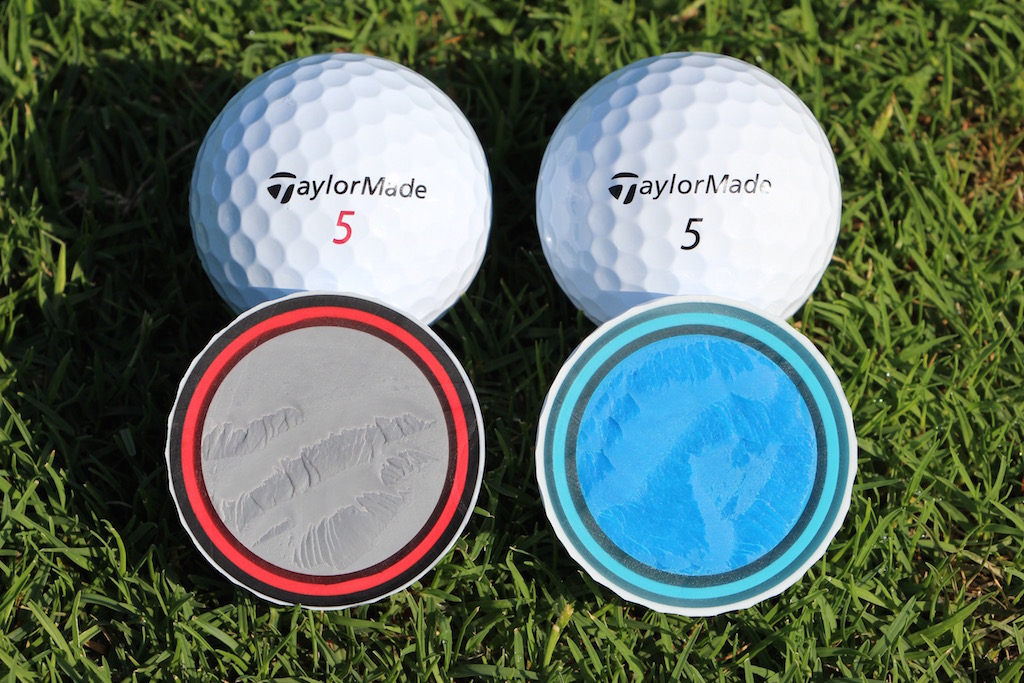
TaylorMade’s TP5x and TP5 golf ball (right), which has a slightly firmer feel.
Despite the low-spinning qualities of the golf balls on full shots, TaylorMade believes it’s giving up nothing to the competition in terms of short game performance. “There’s no golf ball that spins more around the greens,” a TaylorMade representative told me. That’s a legal way of saying no other golf ball company can prove, with confidence, that its golf ball spins more around the greens.
By producing extremely low spin on full shots, but without giving up performance and feel around the greens, TaylorMade says it’s providing the best qualities from each end of the spectrum with its TP5 and TP5x golf balls. But… how? TaylorMade engineers accomplished the feat by using larger and softer-compression cores. TaylorMade says the cores “activate” at 70 mph of swing speed inside of the five-piece constructions, which also have firm mantle layers and soft, urethane covers. The result is low spin on full shots, and high spin on shorter shots.
“It’s the real first golf ball (TaylorMade has) made that’s a game changer,” McGarity said.
TaylorMade does admit, however, that golfers may be sacrificing a bit of “workability” with the irons. That’s to say hitting hooks and slices with its golf balls becomes more difficult due to the lower spin. While the TP5 will offer a bit more of that control than the TP5x, it’s definitely something to keep in mind for those who prefer to play a Bubba Watson-style of golf.
Looking to the future
So does all of this mean that lower-spinning golf balls on full shots are the future of golf? Will we see golf equipment companies striving for drastically lower spin over the next few years?
TaylorMade representatives say they continue to chase lower spin in their prototyping, and until the golf ball is diving out of the air to the golfer’s detriment, lower spin is the future of golf balls. Obviously, TaylorMade is fully committed to a lower-spinning golf ball, and lower spin in general throughout its product lines.
For other premium golf ball manufacturers, bringing lower-spinning options to the market seems likely, given the performance benefits and Tour validation of TaylorMade’s new golf balls. But there’s a reason there are so many variations of golf balls on the market; every golfer is different. Some need more spin with the driver and want more workability with the irons, some want a super firm feel and others just want the cheapest ball possible.
Golfers should view TaylorMade’s TP5 and TP5x golf balls as options in the vast marketplace of golf balls, and perform thorough testing to figure out if this is the right line of golf balls for their game. And remember, lower spin and more distance will require recalibrating your iron distances, and possibly adjusting your equipment, so a mid-season switch is recommended only to those who are willing to put in the necessary work.
- LIKE311
- LEGIT52
- WOW18
- LOL8
- IDHT2
- FLOP6
- OB2
- SHANK79
Ball Reviews
Review: Callaway Chrome Soft X Golf Balls
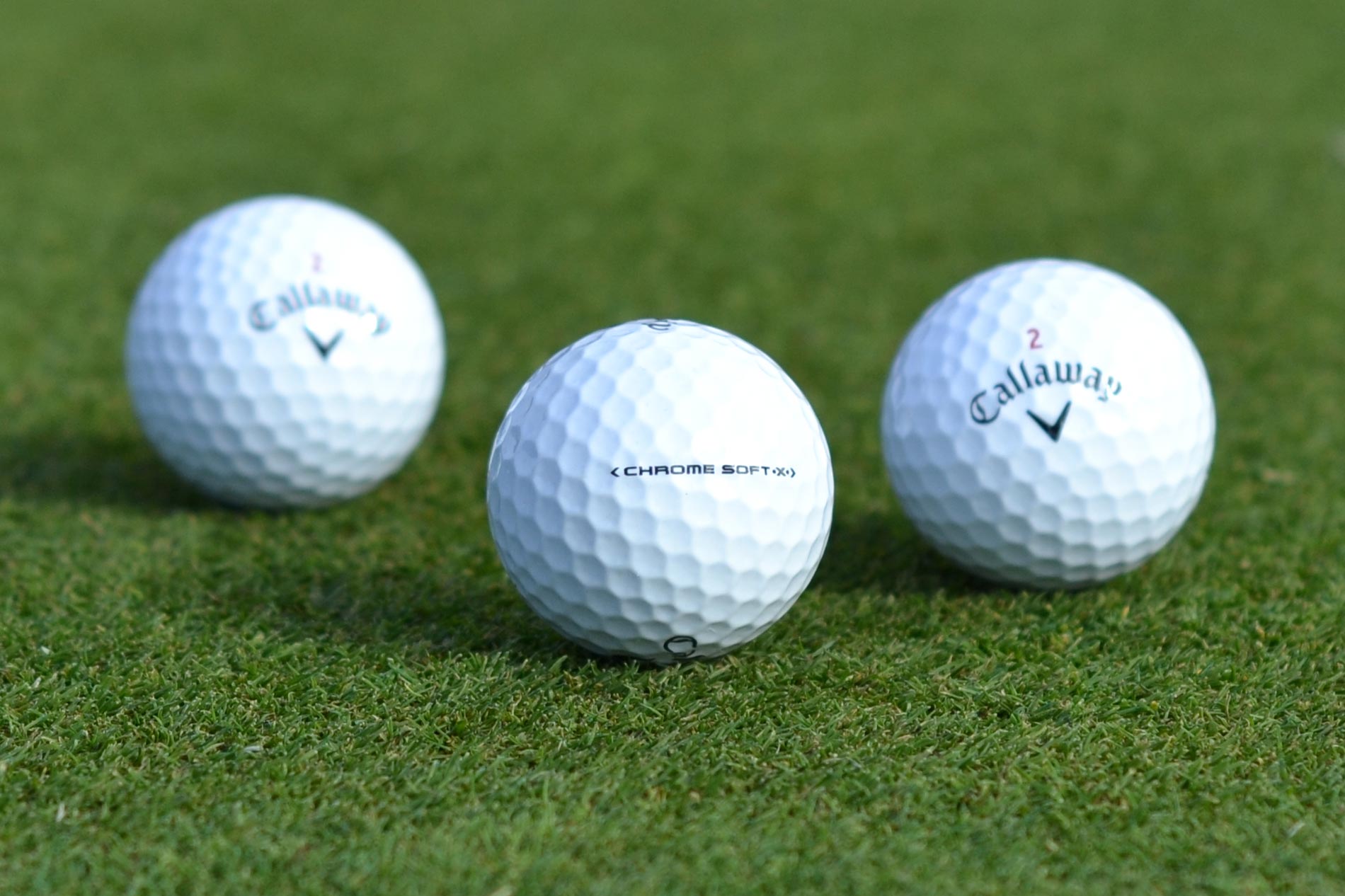
Pros: Incredibly soft feel like the Chrome Soft, but the Chrome Soft X increases spin through the bag to give better players more control.
Cons: Golfers who struggle with too much slice or hook won’t find it any easier to keep shots close to the target with the Chrome Soft X.
Who They’re For: Better players with higher swing speeds looking for a soft-feeling ball that checks up faster with iron shots than Chrome Soft.
The Review
Callaway says the Chrome Soft is “the ball that changed the ball,” and in many ways that’s true. It’s a tour-level golf ball with a softer feel, less spin through the bag and even a lower price point ($39.99) than some other tour balls in its category.
The Chrome Soft is Callaway’s best ball option for the vast majority of golfers (and received a 5-star rating by GolfWRX), but it isn’t for everyone. Callaway’s solution for them is its new Chrome Soft X golf ball.
What’s New in the Chrome Soft X
The original Chrome Soft golf ball, launched in 2015 had the very soft compression of 65. When Callaway released the 2016 version of Chrome Soft, it gave the ball a slightly higher compression (75), which improved its consistency on short-iron shots. The compression of its new Chrome Soft X is 90.
The reason for the higher compression has to do with the low-spin profile of the Chrome Soft, a blessing to most golfers as it helps their shots fly straighter and farther. It’s not ideal for some tour pros and better golfers, however. We’re talking about the kind of golfers who have great mechanics and strike shots consistently on the center of the club face. They often have a ball flight that is so dialed in that the lower-spinning performance of the Chrome Soft makes their shots harder to control. To address that small but important segment of the golfing population, Callaway created the higher-spinning Chrome Soft X.
Under the hood, Callaway used a slightly thinner urethane cover, increased the size and hardened the compression of the Dual SoftFast core, and enhanced the HEX Aerodynamics. As a result, the Chrome Soft X should generate more ball speed and spin through the entire bag.
Dave Bartels, Callaway’s Senior Director of Golf Ball R&D, says golfers will be able will notice the differences and have a clear favorite. “We expect that golfers who like the Chrome Soft X probably won’t like the Chrome Soft very much, and vice versa.”
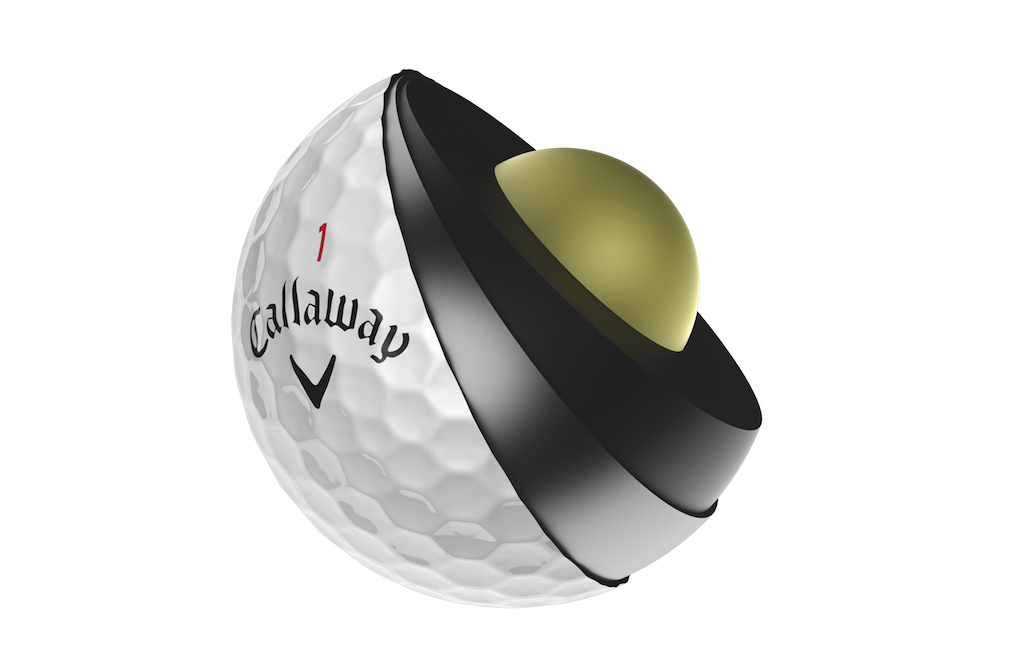 The Chrome Soft X ($39.99) will be in stores February 3 in White and Yellow.
The Chrome Soft X ($39.99) will be in stores February 3 in White and Yellow.
Performance
Since the Chrome Soft X is meant to be a complimentary golf ball to the Chrome Soft, we tested them head-to-head.
Compared to the Chrome Soft the Chrome Soft X should:
- Feel almost as soft as the Chrome Soft with the same durability.
- Generate more spin where better golfers need it.
- Generate faster ball speeds.
Like previous reviews, I tested these on the course and on a launch monitor with a 60-degree wedge, 6-iron and a driver. To allow me to re-hit each ball numerous times, I completed the testing indoors on a camera-based SkyTrak launch monitor. To keep the numbers as consistent as possible between the balls, I threw out and re-hit any shots that were not struck on the center and did not land within a designated target zone for each club (Wedge: +/- 3yards, 6 Iron: +/- 8 yards, Driver: Target width of 40 yards).
But I’m not a robot, so take that into account.
60-degree full wedge shots
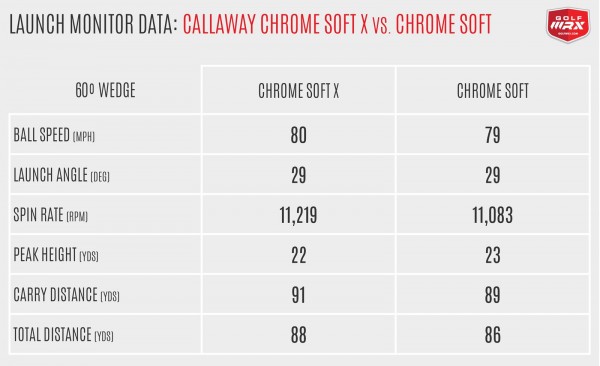 Main differences we expect to see: Not many. If anything, the Chrome Soft X might generate slightly higher ball speeds.
Main differences we expect to see: Not many. If anything, the Chrome Soft X might generate slightly higher ball speeds.
What the data actually shows: Pretty much as expected. Overall, the Chrome Soft X clocked 1 mph more ball speed, 136 rpm more spin and carried 2 yards farther. These are very subtle differences, and for an amateur like me I would not expect to notice a difference on the course.
The larger Dual SoftFast core and higher compression could account for the additional ball speed and carry distance. For me, 2 yards won’t require much of an adjustment. If you are a better player completely dialed in with your distances, you might need to make a minor adjustment.
What I saw on the course: When I’m testing golf balls, I like to drop one down without looking at the label and hit a shot. This allows me to remain unbiased in my expectation and just watch what the ball does. When I did this test with the Chrome Soft X on a full wedge shot, I was instantly impressed. The feel was incredible and the distance was spot on. After the wedge testing, I would’ve put this ball straight in the bag.
6-iron shots
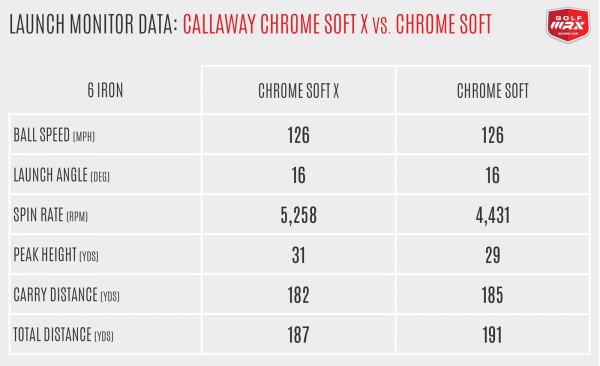 Main differences we expect to see: The Chrome Soft X should generate faster ball speeds and more spin than the Chrome Soft.
Main differences we expect to see: The Chrome Soft X should generate faster ball speeds and more spin than the Chrome Soft.
What the data actually shows: The Chrome Soft X is continuing to spin more through the bag. Ball speeds were slightly higher by about 0.8 mph. The Chrome Soft X generated a considerable amount of additional spin, but also flew slightly higher and had a steeper descent angle.
Just like you’ll see with the driver below, the additional spin decreased my distance (the Chrome Soft X averaged 3 yards less carry and 4 yards less total distance), but increased my stopping power.
What I saw on the course: Just like previous Chrome Soft balls, the feel off the club face with mid irons was very soft. I really noticed the additional spin on the course, as my draw shot shape started to get a little more curve to it and my shots stopped faster on the greens. I felt like I was able to attack greens with longer irons, flying shots all the way to the hole instead of playing a little short and letting the ball release more.
Driver shots
Main differences we expect to see: The Chrome Soft X should spin more slightly more and deliver higher ball speeds than the Chrome Soft.
What the data actually shows: I am not a high swing-speed player. My average playing swing speed is around 105 mph, which is generally considered the cut-off before you have a “high swing speed.” Also, I am not a low-spin player, so having a ball that can spin a little more might not be the best for my specific game. Based solely on that, I would not expect to see the full benefits of the Chrome Soft X
The testing backs this up. The Chrome Soft X delivered the same ball speed, but with 432 rpm more spin. Bartels says Callaway’s testing has shown golfers either spinning the Chrome Soft and Chrome Soft X the same off the tee, or an increase of 100-200 rpm with the Chrome Soft X. He called 400 rpm “within the ballpark,” but not typical.
Just to be clear, we’re talking about a change in performance that resulted in just 1 yard less carry distance and 3 yards less total distance; basically nothing.
What I saw on the course: As my launch monitor data showed, the Chrome Soft X appeared to fly higher and not roll as much when it hit the ground.
The one place I saw a benefit to the Chrome Soft X was when I contacted a drive high off the club face. With the Chrome Soft, these drives fell out of the sky more quickly, costing me carry distance. With the Chrome Soft X, they stayed in the air a little longer. It’s clear for low-spin players, or those with already optimal launch conditions, the Chrome Soft X can provide as good, if not better performance.
Around the Green
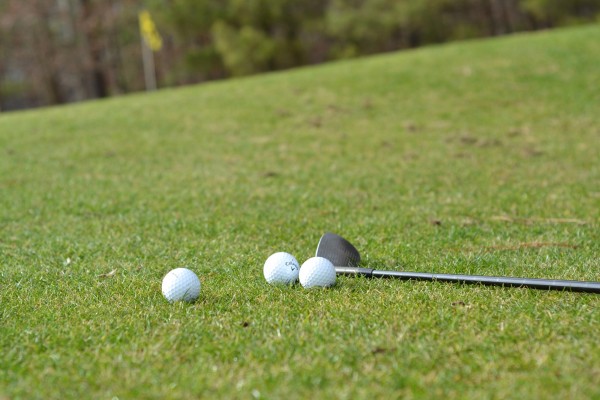 There is nothing this ball can’t do around the greens. I don’t have a tour pro’s arsenal of short game shots, but I do know the difference between a ball that can do anything and a ball that can do only some things.
There is nothing this ball can’t do around the greens. I don’t have a tour pro’s arsenal of short game shots, but I do know the difference between a ball that can do anything and a ball that can do only some things.
I put the Chrome Soft X through the paces of low spinners, high flop shots, bump and runs, and bunker shots. As expected, it performed identically to the Chrome Soft.
Putting
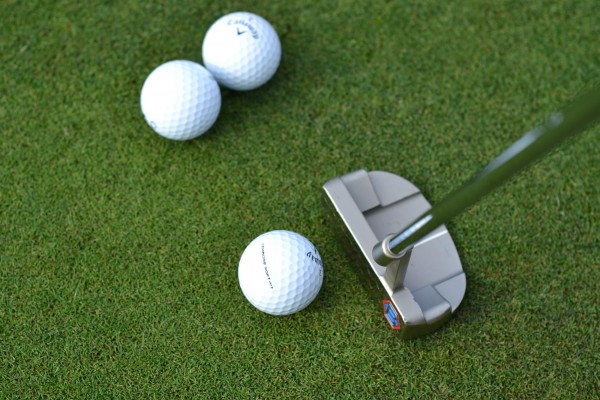 Putting one right after the other, if you are really paying attention, the Chrome Soft X feels slightly firmer off the putter face with a slightly higher-pitched sound than the Chrome Soft. But this ball is soft, smooth and rolls beautifully. I have always loved the way the Chrome Soft feels off the putter, going back to the 2015 ball. Even though it’s slightly firmer, the feel off the putter of the new Chrome Soft X continues to impress me (through the entire bag really).
Putting one right after the other, if you are really paying attention, the Chrome Soft X feels slightly firmer off the putter face with a slightly higher-pitched sound than the Chrome Soft. But this ball is soft, smooth and rolls beautifully. I have always loved the way the Chrome Soft feels off the putter, going back to the 2015 ball. Even though it’s slightly firmer, the feel off the putter of the new Chrome Soft X continues to impress me (through the entire bag really).
Feel is subjective, but I found the Chrome Soft X to be one of the softest tour balls on the market today.
Durability
I completed all my testing with only one ball, so it saw a considerable amount of shots. Like previous Chrome Soft balls, the Chrome Soft X is very durable. It took a beating with the 60-degree and showed only light scuff marks. Both the Chrome Soft X and the Chrome Soft perform very similarly in terms of durability.
The Takeaway
The Chrome Soft X isn’t for everyone and that is why Callaway is marketing the “X” as a complimentary ball to the Chrome Soft and not a replacement.
With the changes Callaway has made, the Chrome Soft X checks off all the criteria for a high-performance premium golf ball. If you thought the 2016 Chrome Soft was a little too soft with too little spin through the bag, the Callaway Chrome Soft X might just be the ball you’re looking for.
- LIKE294
- LEGIT43
- WOW14
- LOL8
- IDHT4
- FLOP8
- OB3
- SHANK25
Ball Reviews
Review: Callaway Chrome Soft golf balls
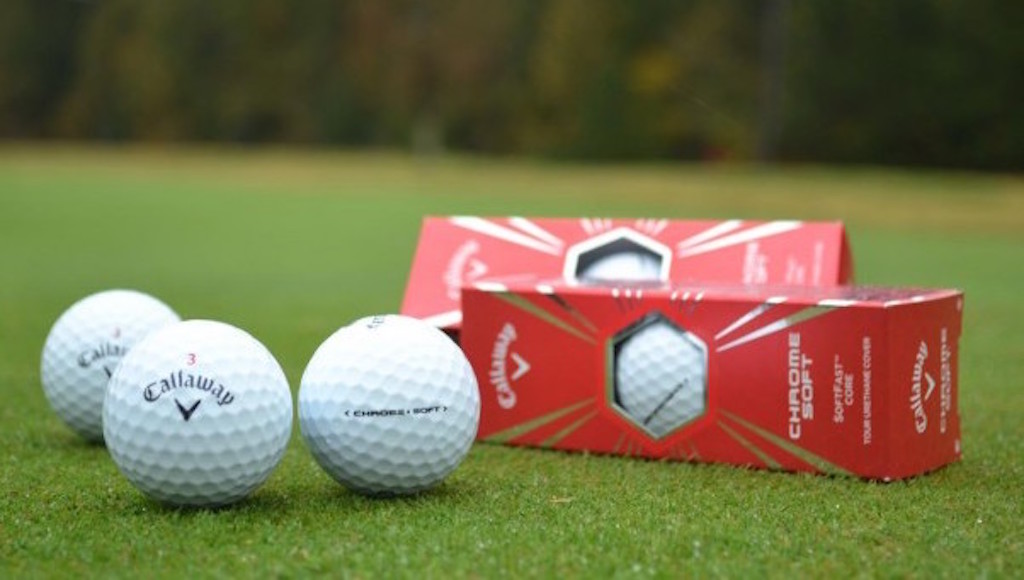
Pros: The Chrome Soft has an incredibly soft feel, but doesn’t skimp on performance. It will create maximum distance off the tee for 99 percent of golfers, yet offers short-game spin that rivals more expensive models.
Cons: Golfers with high swing speeds (105+ mph) — a.k.a. the 1 percent — may lose a few yards off the tee due to the Chrome Soft’s low-compression design.
Who They’re For: Any golfer can play the Chrome Soft.
The Review
Last year, Callaway released the Speed Regime golf ball line, which offered three different golf balls designed for different swing speeds, all with slightly different levels of compression and design. While this gave golfers the ability to really “fit” a golf ball to their game, more choices doesn’t always translate into better decision-making.
With its new Chrome Soft golf balls, Callaway has released just one ball, with one set of specifications, designed to provide a benefit to all golfers regardless of their swing speed.
The three-piece Chrome Soft, with a low-compression Soft Fast core and extremely soft DuraSpin cover, generates lower spin off the driver and long irons for more distance, while generating tour-level spin with shorter irons and shots around the green.
Let’s Talk Core
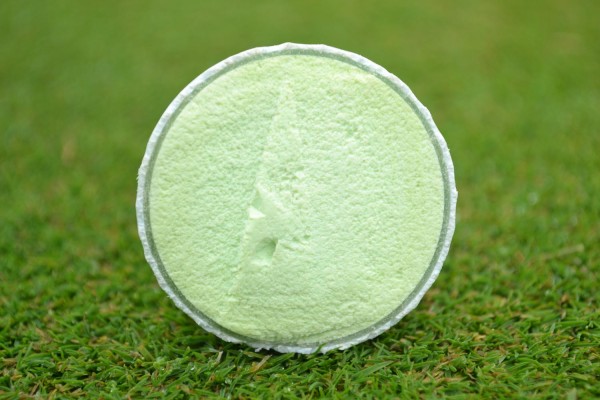 The Chrome Soft is all about the core, and since Callaway is devoting advertising space to actually talking about the compression of the golf ball, let’s dig into it a bit more.
The Chrome Soft is all about the core, and since Callaway is devoting advertising space to actually talking about the compression of the golf ball, let’s dig into it a bit more.
Thanks to a brand new SoftFast core, as Callaway calls it, the ball has a compression rating of 65. By comparison, last year’s Callaway SR-3 had a compression of around 105. Typically, the softer the core, the more the ball deforms at impact. This is great for slower swing speed players who need the ball to deform more so it can spring back into shape and generate more distance. But faster swing speed players can actually lose distance if the ball is too soft. After experimenting with 39 different prototypes, however, Callaway was able to create the right combination of the core and mantle layer so the Chrome Soft retains the energy from impact and keeps ball speed high — even at faster swing speeds.
The Chrome Soft is available now in White, Soft Yellow and Truvis Technology with an MSRP of $37.99. Custom player numbers and personalization is also available.
Performance
We put the new Chrome Soft to the test against the Callaway Speed Regime SR-3, which I tested last year.
Compared to the Speed Regime line the Chrome Soft should:
- Feel softer off every club, with slightly better durability.
- Generate less spin off the driver.
- Create more spin off shorter irons.
Like all reviews, I tested these on the range, on the course, and on a launch monitor with a 60-degree wedge, 6-iron and a driver. I headed to BridgeMill Golf Academy and worked with head pro Tom Losinger to get the data using a Trackman in his indoor studio.
60-degree full wedge shots
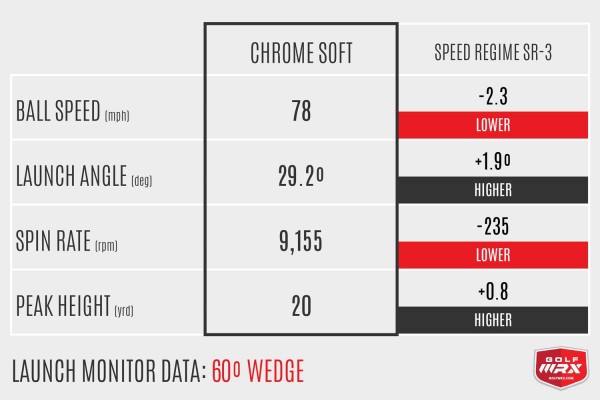
Main differences we expect to see: The Chrome Soft should generate more spin on full wedge shots.
What the data actually shows: Exactly what we expected to see. The Chrome Soft generated 200 rpm more spin than the SR-3, while launching lower and hitting a slightly lower peak height. I did, however, see a big difference in ball speed and carry distance, with the Chrome Soft flying three more yards on average.
Increased ball speed or carry distance with the shorter irons is not typically on the list of requests from better players. In this case, it’s a by-product of the new SoftFast core and three more yards of carry with a 60-degree wedge is fairly significant. That 10-foot putt for birdie is now almost 20. These types of gains will require an adjustment.
What I saw on the course: This ball was perfect inside 100 yards. If it was flying farther than other balls I’ve played, I didn’t notice. The trajectory on full wedge shots was nice and low compared to other balls, and I was already able to notice a difference in feel between the Chrome Soft and the SR-3. A difference of 200 rpm of spin wasn’t noticeable on the course, as both balls performed very similarly when they hit the green.
6-iron shots
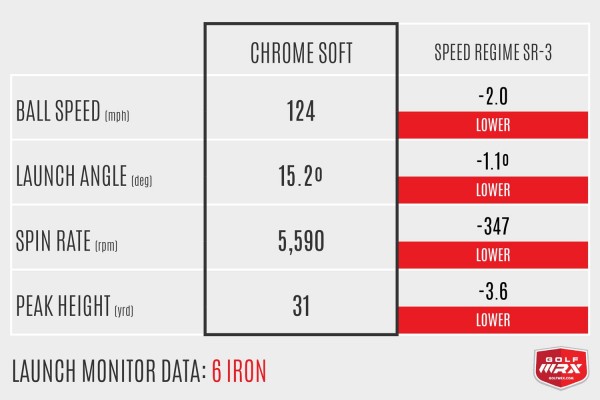
Main differences we expect to see: The Chrome Soft should generate faster ball speeds and less spin than the SR-3.
What the data actually shows: The data backed up the expectations when it came to ball speed. However, I actually saw more spin on my 6-iron compared to the SR-3 and even other tour balls. This could be due to a variety of factors concerning my individual swing, and other golfers might see less spin off their mid irons. Compared to the SR-3, the Chrome Soft launched a little higher, with more spin and ball speed, allowing it to carry a little more than one yard farther. It also hit a higher peak height with a steeper descent angle.
What I saw on the course: I was probably most impressed with the Chrome Soft with the mid to long irons. Yes, the ball performed great off the driver, but the softer feel was very apparent with an iron in my hands. Launching shots with mid to long irons had a more effortless feel. I was also able to get some nice height and spin on my longer irons without sacrificing distance, so I could land shots on the green and see them stick, instead of hitting and running off the back.
Driver shots
Main differences we expect to see: The Chrome Soft should spin less, but still generate more ball speed than the SR-3.
What the data actually shows: I’m a borderline high-speed guy with the driver. My average swing speed is around 106 mph — right on the borderline where golfers can start to “over-compress” the Chrome and possibly lose distance.
You may have read editor Zak Kozuchowski’s reviews on GolfWRX, who can generate more than 115 mph of swing speed with his driver. In his on-course testing, he said he hit the Chrome Soft about the same distance as other tour balls.
“If they liked everything else about the ball, I can’t imagine a golfer who swings 105+ mph wouldn’t play the Chrome Soft just because it was a few yards shorter than a higher-compression tour ball off the tee,” he said. “If a soft feel is important to them, that’s going to take precedence over a few yards of extra distance. And they’ll get those few yards back with their long irons, anyways.”
In my testing, the Chrome Soft generated slightly faster ball speeds, and a lot less spin — almost 300 rpm less spin than the SR-3. This translated into an extra 1.5 yards of carry, and more than 5 extra yards of total distance.
What I saw on the course: The distance gains and lower spin appeared to translate to the course. I wasn’t having any issues getting the ball to run out once it hit the fairway. And the distance appeared to be spot on, if not slightly longer.
Around the green
It is always fun to have that moment in a round where you hit the low, checking chip that freaks out your playing partners. I had that moment from about 55 yards away to a back pin, with out of bounds directly behind the green. With a 56-degree wedge, I hit the low shot and right before the ball hit the green, my playing partners were yelling “get down!” But I knew I hit it well and the ball bounced, checked, and then just lipped the cup.
Could I have executed that shot with other tour balls? Yes. But, it is important to know I can execute it with the Chrome Soft. I’m not a short-game wizard like one of Callaway’s more well-known tour pros, but these balls allow me to hit any kind of shot around the green without hesitation.
Putting
The Chrome Soft feels much softer than the SR-3, which was noticeably softer than previous generation Callaway tour balls. The sound profile has a lower, less “clicky” sound that translates into improved feel. The engineers really have brought the incredible feel of the SuperSoft to the tour-level Chrome Soft.
I’ve rolled some beautifully smooth putts with these balls. They are predictable and roll true when you strike them well. While I won’t go so far as to say they are the best feeling golf ball on the market (although they are close), they are the best feeling Callaway golf ball I’ve tested.
Durability
When most people hear “softer cover,” they instantly assume it will be less durable — and for good reason. It is counter intuitive to believe that soft equals durable. I’m not going to pretend to know the science behind it, but the DuraSpin cover is made from Thermoplastic Urethane, which actually becomes more durable the softer it gets.
I’ve played numerous rounds with the same ball, and also completed all the testing with only three Chrome Soft golf balls, so I can back up Callaway’s claims. These balls are definitely durable and can last numerous rounds if you don’t lose them. With fresh wedge grooves, I was getting all the spin benefits and little to no scuffing. I did see some minor scuffs after finding some rocky rough off the tee, but the ball was still playable and I shouldn’t have been over there in the first place!
The Takeaway
If you’ve avoided Callaway balls in the past because of the “clicky” stigma that has followed them around, it might be time to try a sleeve of the Chrome Soft. Many golfers, myself included, really love the feel of the Callaway SuperSoft, but not the overall performance. The Chrome Soft is a marriage of the soft feel of the SuperSoft with the tour-level performance of the Callaway SR-3. With low spin off the driver and the most spin on short irons of the tour balls I’ve tested this year, the Chrome Soft is one of the best golf balls on the market today.
We gave the Chrome Soft 5 stars, but one of our editors made the case that on a scale of 1-10, the Chrome Soft is an “11.” If you’ve seen the movie Spinal Tap, you know what he means.
See what GolfWRX Members had to say about the Chrome Soft in our Official Forum Testing Thread.
[wrx_retail_links productid=”12″]
- LIKE267
- LEGIT34
- WOW18
- LOL3
- IDHT5
- FLOP1
- OB2
- SHANK24
-

 19th Hole1 week ago
19th Hole1 week agoJohn Daly stuns fans into silence with brutal opening tee shot on PGA Tour Champions
-

 19th Hole1 day ago
19th Hole1 day agoThings got heated at the Houston Open between Tony Finau and Alejandro Tosti. Here’s why
-

 19th Hole2 weeks ago
19th Hole2 weeks ago2-time major champ announces shock retirement from the sport at age of 33
-

 19th Hole1 week ago
19th Hole1 week agoCharlie Woods finds it tough going on American Junior Golf Association debut
-

 19th Hole2 weeks ago
19th Hole2 weeks agoEdoardo Molinari reveals the latest PGA Tour golfer to turn down ‘good offer’ from LIV Golf
-

 Equipment3 weeks ago
Equipment3 weeks agoBest driver 2024: The best driver for you, as recommend by expert club fitters
-

 19th Hole2 weeks ago
19th Hole2 weeks agoScottie Scheffler had an interesting response when asked how he ‘quiets the noise’ following Players victory
-

 19th Hole2 weeks ago
19th Hole2 weeks agoJon Rahm dealt fresh blow to hopes of qualifying for 2025 Ryder Cup


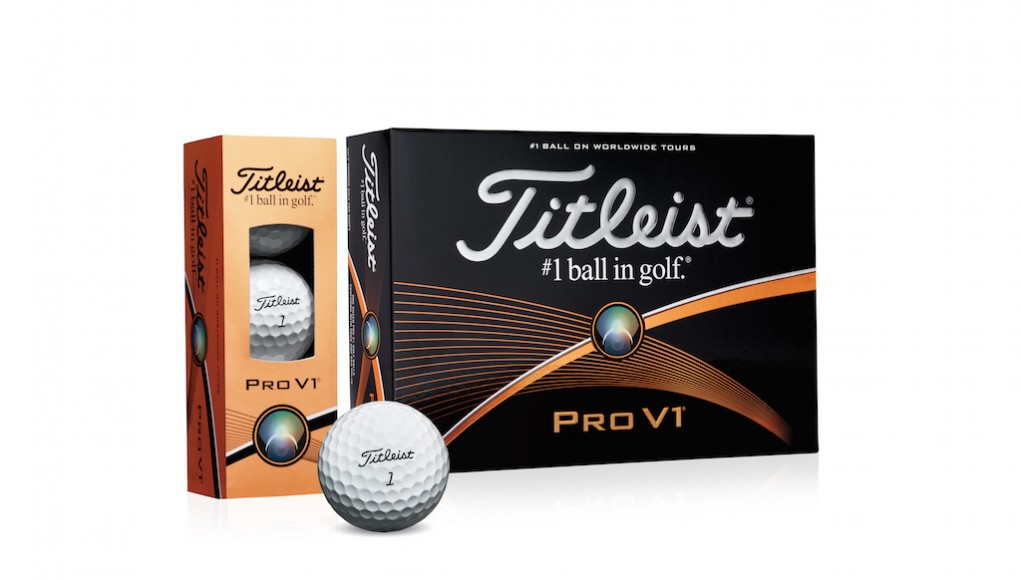
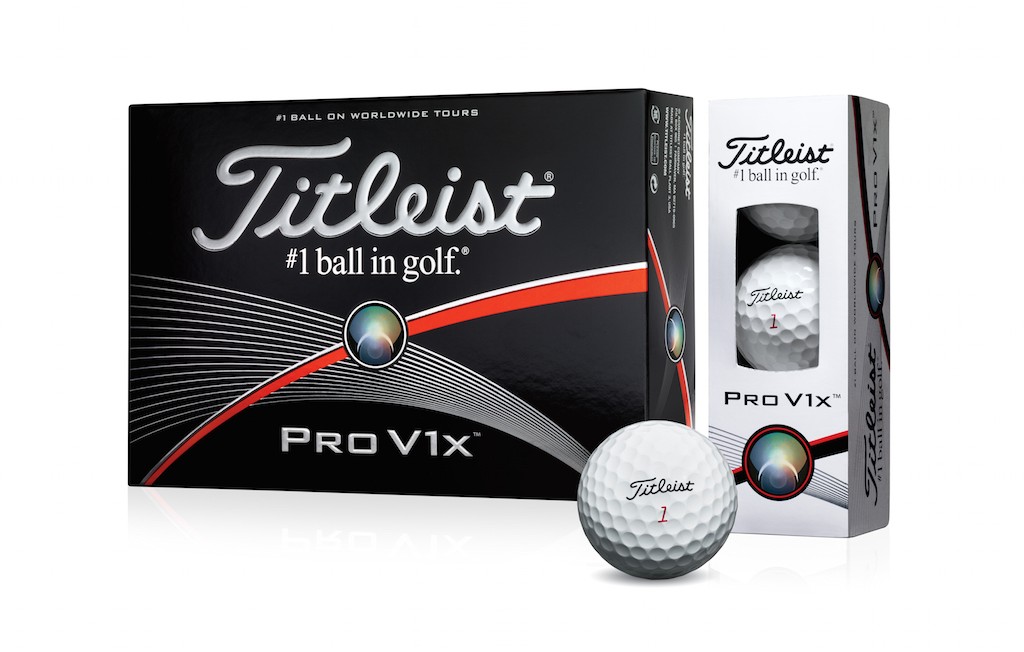
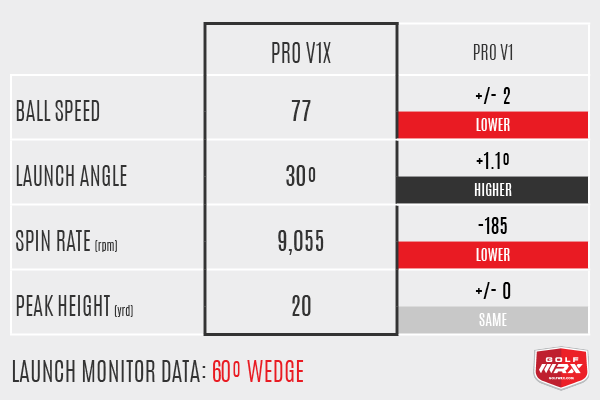
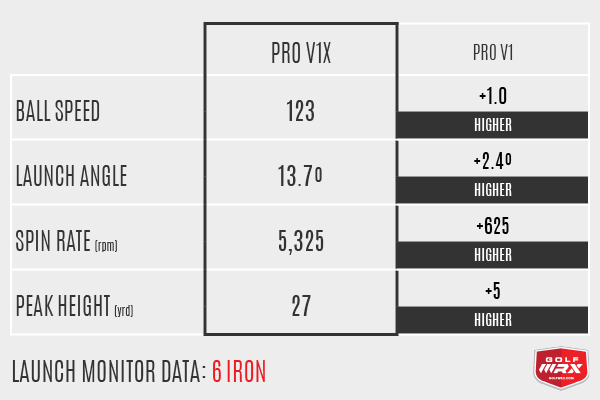
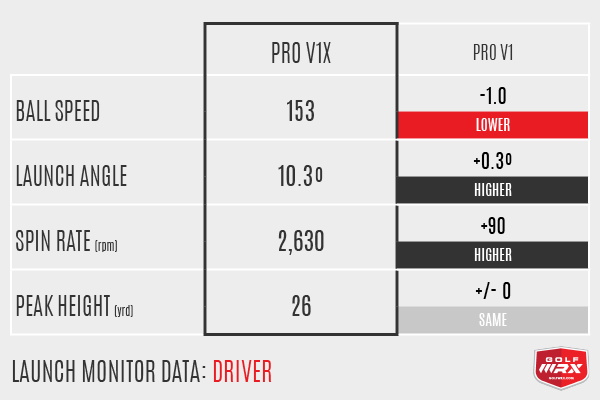
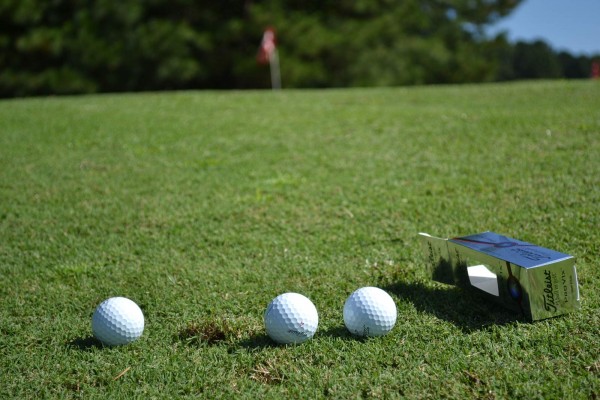
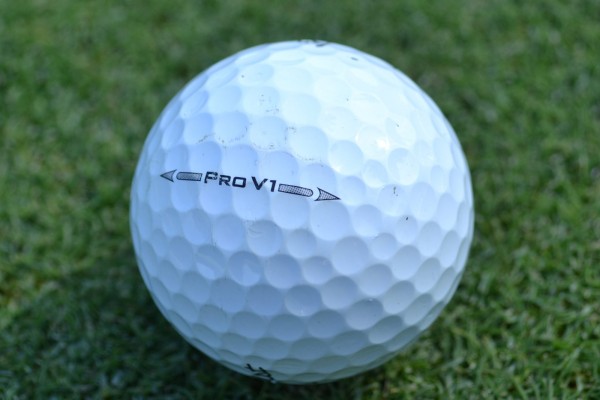


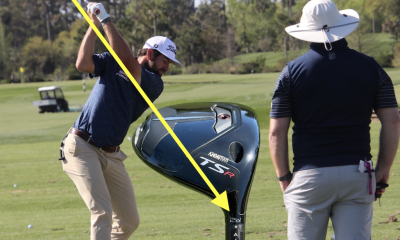

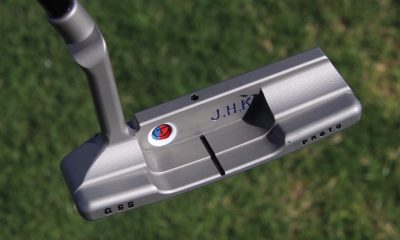



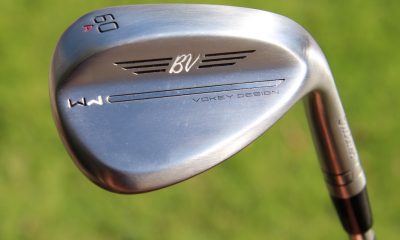

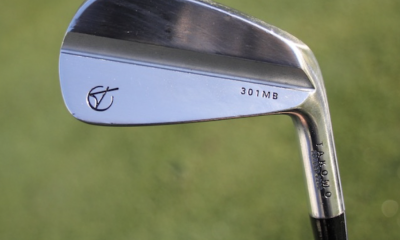





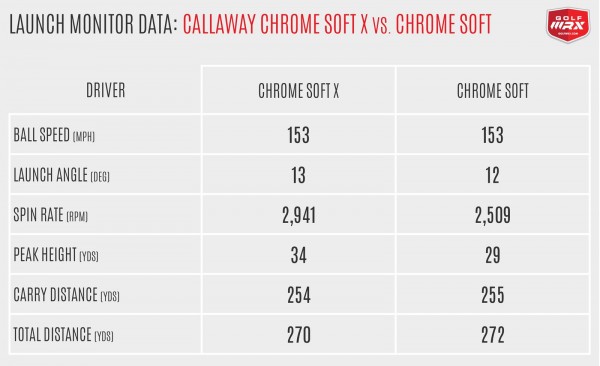
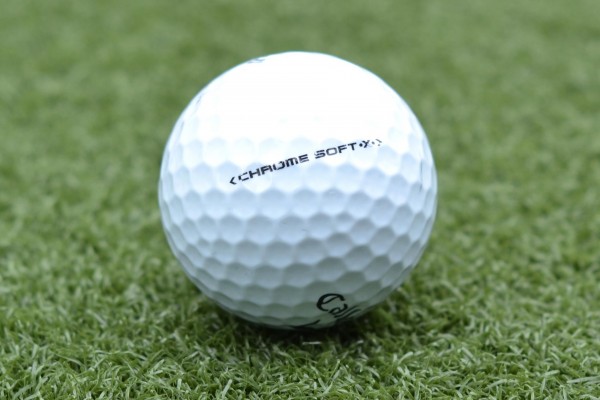
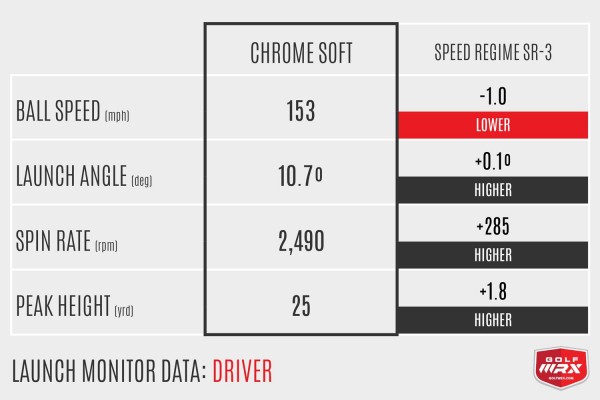
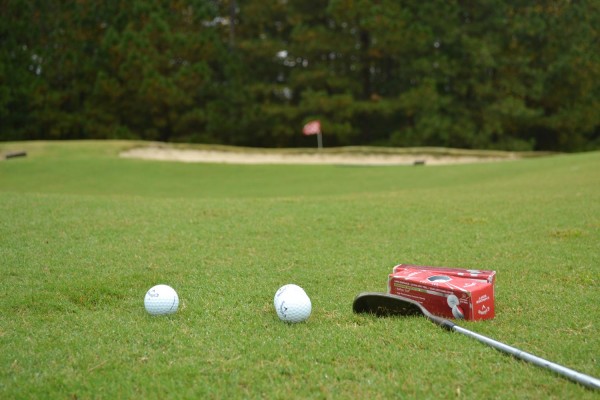
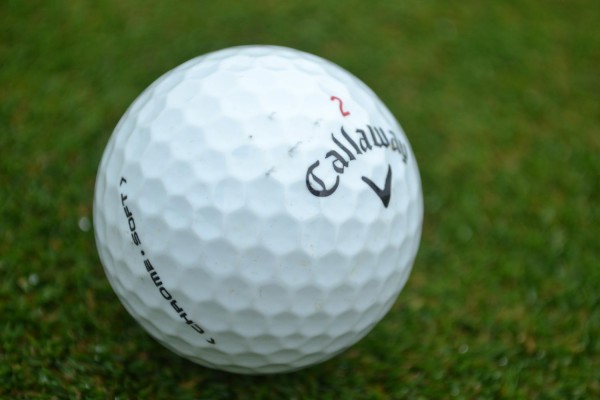









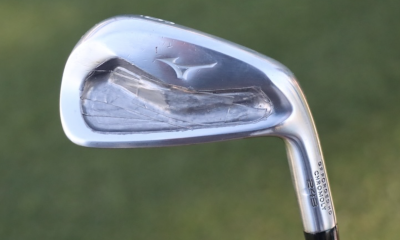

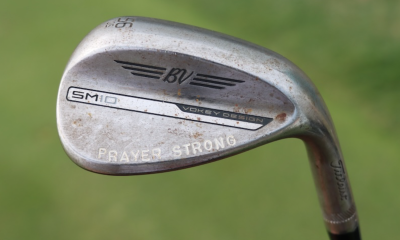

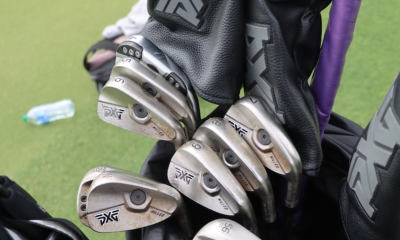

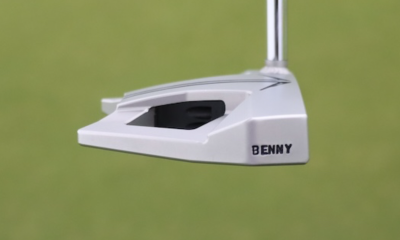

Pat
Mar 31, 2016 at 6:31 pm
I play the prov1x as my ss is 122mph and it’s the best ball on the market, no question. I’ve hit some of the furthest drives with this ball throughout the years. 330 yard carry plus 20 yards of roll on flat hole with barely any wind and close to sea level. Spins just the right amount with wedges and feels great off the putter. My only negative comment about this ball is that it seems to launch just a tad too low for me on my mid-low iron shots. Aside from that, it’s the total package.
KN
Oct 8, 2015 at 12:38 am
This article rolls nicely into a previous a piece titled something like “Can A Budget Golf Ball Give You A Premium Short Game?” (Can’t recall the exact title; apologies to the author.)
There’s no disputing the performance aspects of both the Pro V’s. This ball has the potential to make everybody a better golfer, no matter what your handicap or swing speed is. Someone earlier tried to convince me that their “budget ball” was just as good as a “premium ball” (read Pro V1) because all one had to do is play for “the extra roll” on every shot, and they would be fine. Just think about that one for a minute. How many approaches are flat, wide open and without any obstacles? How many times do you see the pin in the middle of the green, with no slope, rough or trap to contend? This person also didn’t seem to think spending more money on a piece of equipment one uses on every shot in the game was worth it. I guess if you lose a dozen balls a round, you might get frustrated every time you hand over $50 for twelve sparkling new White Globes. Personally, I found the results of Kane’s testing to be very similar to mine, with a notable exception. I have not tested the 2015 balls yet, but I did some short game tests in the spring of 2013 with both the V1’s and the V1X’s. With both chipping (10-20 yds) and pitching (25-50 yds), but especially very short chips (10 yds & in), the V1X came off the face noticeably higher, and with more “pop,” than the V1. It also had a little less spin than the V1. These two different variables changed my whole approach to hitting those shots. When you’re trying to tuck a shot neatly next to the pin, or even hole it, being off by even a yard or two in distance or in either direction matters a lot. Not so much when you’re on the tee on a long par 4 or 5 when the fairway is 40 yards wide. Having played the Pro V1 for many years now, the audible soft click you are rewarded with after a solid strike of any speed is somewhat comforting, and that is at least different for the Pro V1X. It’s a higher pitched, tinnier click/whack. But after so long of playing the V1, it was difficult to judge the higher trajectory, less spin and more roll of the V1X on the short shots. Now, it’s not like the V1X performed like a piece of smooth granite. Far from it. It’s just that the two balls are made and play differently. I think you would get as many different test results as there are users of this golf ball. But that’s not a bad thing. It just proves that we’re not machines…yet.
Mike Paul
Oct 7, 2015 at 5:19 am
I compared a 2001 Pro V1x to the more recent 2014 Pro v1x and the newer ball flew 15 yards further with a 6-iron shot (10 shots each, recorded on trackman), the driver increase was approximately 25 yards. The modern golf ball is traveling further
Chuck
Oct 6, 2015 at 5:37 pm
I have tried all the brand balls over the years and have found that the Provs best suit my game. When you hit the ball in the sweet spot consistently nothing performs better. A lot of R&D goes into the Titleist balls and they are not the number golfs balls with out justification. I like the spin around the green when I need it and the distance off the tee when I need that. At the age of 69 I need all the advantages I can get and after years of play other brands of balls, I know what works for me, and it is Titleist. I think the numbers of players purchasing and playing these balls speak for themselves. The pros do have a choice and they choose the best.
Paul Bricoccoli
Oct 6, 2015 at 5:05 pm
when is Titleist going to make the Pro V in optic yellow?
Carlos Danger
Oct 6, 2015 at 9:42 am
I could have made this review alot shorter for you.
“Slightly different font, otherwise the same”
Jlukes
Oct 4, 2015 at 8:51 pm
Would love to see similar article with the Zstar and zstar xv. Great stuff
KK
Oct 1, 2015 at 10:04 pm
Pro V1 and V1x are head and shoulders above any other tour ball. You just have to pick one up to know this. Then you stick one 12 inches from the hole from 120 yds with buttery smoothness and you never look back.
larrybud
Oct 1, 2015 at 12:12 pm
I think the obvious takeaway is that the launch, ballspeed, and spin rates are well within the margin of error for 99% of golfers.
I mean 0.3* higher launch… Statistically insignificant!
Rat tattleson
Oct 1, 2015 at 11:32 am
Dont mind pro vees at all but i find for me personally the x works better but my go to ball has been callaways sr3 for the last 2 seasons it offers great distance and spin and i seem to control it better when i miss. Those v1x like to bend a little more off line when im not striking it great. But that sr3 has the capability to hit all the shots i need . Im a 9 handicap. Thanks for the breakdown of the didferent clubs
Saylor
Sep 30, 2015 at 11:27 pm
Titleist Pro V1 is so perfect. Love it
Golfraven
Sep 30, 2015 at 2:58 pm
Just tidied by bag today and just left Titleist balls in there. Preferably play the V1 but have also good experience with NXT Tour, Velocity and even DT Solo balls – play all of those dependent on weather and if what kind of day I have. Titleist all the way I admit.
Nolanski
Sep 28, 2015 at 6:39 pm
Youre the worst poster on this whole website…
Charlie
Oct 6, 2015 at 3:38 pm
“Wouldn’t only got 3.5 stars”
Jack
Oct 7, 2015 at 4:32 am
At least it wasn’t “most probably wouldn’t never only not gotten nothing but 3.5 stars.”
Joe
Oct 7, 2015 at 8:27 am
LOL… PWNED
john
Sep 28, 2015 at 6:37 pm
Softer cover and durability are mutually exclusive, they will be less durable.
J W
Sep 28, 2015 at 4:37 pm
Would much rather see LM comparison between previous generation vs these new ones, but that probably wouldn’t help sell many new golf balls…
Kane Cochran
Sep 28, 2015 at 4:47 pm
Thanks for the feedback, JW, we’re always looking to improve based on reader feedback. The LM differences between this generation and the last are pretty slim so we decided a comparison between the two options might help clarify the differences between the two types of Pro V1 golf balls. But to your point, we’re actually working on a Chrome Soft review now and doing a direct comparison to the Speed Regime.
Nolanski
Sep 28, 2015 at 3:09 pm
I buy the recycled ones. Love em and I don’t cringe after I hit a dozen OB.
Jack
Oct 7, 2015 at 4:33 am
Yeah sadly all this nice tech, great ball and all, didn’t stop the last owner from hitting them into the water.
Joe
Oct 7, 2015 at 8:30 am
I’m with you. Just last week I bought 50 AAAA 2014 Prov1X balls for $70.00. Used AAAA balls from a reputable vendor look like a brand new ball I played for 1 – 2 holes.